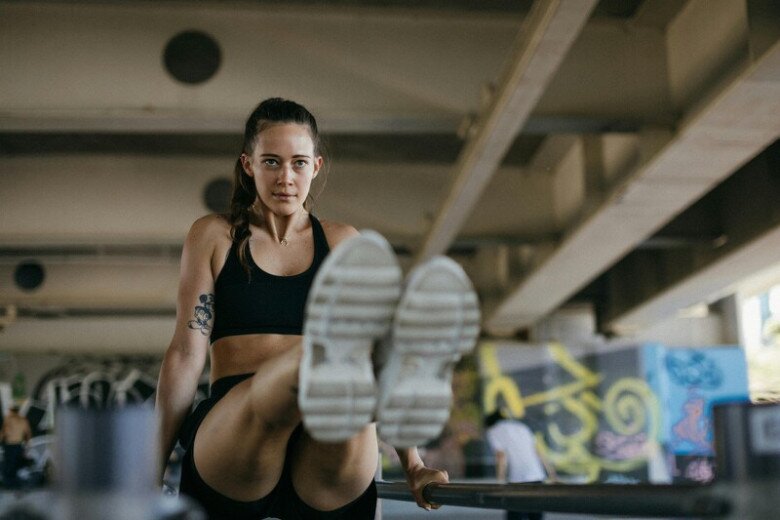The Secret to Running Without Bulking Up Your Calves.
Why do some people look older the more they run?
1. Overdoing it or pushing yourself too hard
When someone gets addicted to running, they may develop certain obsessions, such as constantly increasing their speed, distance, or participating in various marathons. Overdoing it with high intensity and constant pushing can leave your body constantly exhausted and looking older. If you want to run to lose weight, you can gradually increase the duration of your runs and only increase it once a week.

Overdoing it and constantly pushing yourself can lead to exhaustion and premature aging.
2. Running for weight loss can reduce subcutaneous fat
Many overweight people hope to lose weight by running. As the running distance increases and body fat decreases, the subcutaneous fat in the face will also reduce if not supported by fat. As a result, the cheeks become hollow, the cheekbones become more prominent, and the angular features are exposed, making you look a decade older.
3. Not strengthening your muscles
Running should be combined with muscle strengthening. This is especially important for the leg and glute muscles. Recommended methods to strengthen the glutes and legs are squats, planks, and wall sits.
Benefits of combining running with muscle strengthening:
– Increased muscle strength: Better protection for knees, ankles, and other joints during runs, reducing the risk of injuries.
– Improved running speed: Stronger leg and hip muscles have a significant impact on improving running speed and endurance.
– Moderate running + muscle training: Moderate running will burn excess fat, and muscle training will enhance the beauty of your muscle definition. This will make your body look firmer, more proportionate, and younger.

Combining running with muscle strengthening can help prevent skin sagging.
4. Lack of sleep
Running requires adequate sleep. For example, if you run 50km per week, you need to add 30 minutes of sleep each night. Not getting enough sleep and excessive physical energy expenditure from running will affect your health and youthful appearance.
5. Not nourishing your body
Running consumes a lot of physical energy, and inadequate nutrition will accelerate the aging process. Those who regularly run need to consume protein-rich foods and various supplements that can help convert nutrients into energy, aiding the body’s recovery from fatigue.
6. Not taking care of your skin and sun protection
If you don’t protect your skin from the sun while running, your skin will be exposed to UV rays that produce melanin, gradually darkening and causing blemishes. Your skin will also lose its elasticity.
![]()
Your skin may darken and develop wrinkles if you regularly run outdoors without sun protection.
How to prevent aging while running?
1. Sun protection during runs
Avoid running during noon and choose routes with as much shade as possible. Even on cloudy days, apply sunscreen, wear a hat, sunglasses, and sun-protective clothing. Sweating profusely during runs will increase the hydration process of the stratum corneum, making your skin more sensitive to UV rays. Metabolic waste can also irritate the skin. It’s best to wrap a sweatband around your head and carry a towel to wipe off sweat promptly.

Don’t forget to wipe off sweat while running.
2. Don’t run for too long
The World Health Organization recommends at least 150 minutes of moderate-intensity exercise or 75 minutes of vigorous exercise per week. So, two and a half hours of running per week is sufficient, and you should aim to intersperse running with rest.
3. Ensure proper hydration
Not drinking enough water will make your skin look dry and loose. It’s best to carry a water bottle or hydration pack while running. Drink water during and after your runs to help maintain skin elasticity.

Running will make you sweat a lot, so ensure you drink water before, during, and after your runs.
4. Not eating enough healthy fats
Your diet can reverse the “skin sagging” effect of over-exercising to a certain extent, especially the appropriate intake of healthy fats, such as those found in olive oil, avocados, and nuts, which are beneficial for maintaining skin elasticity. Fresh fruits and vegetables are also essential.
How Much Fruit Juice Should Children Drink Daily?
Juice is a delicious and convenient way to ensure your children are getting their daily dose of vitamins and minerals. However, it is important to remember that while fruit juice can be a healthy treat, it should be consumed in moderation. As a concerned parent, it is your responsibility to ensure your child’s health by regulating their juice intake.














